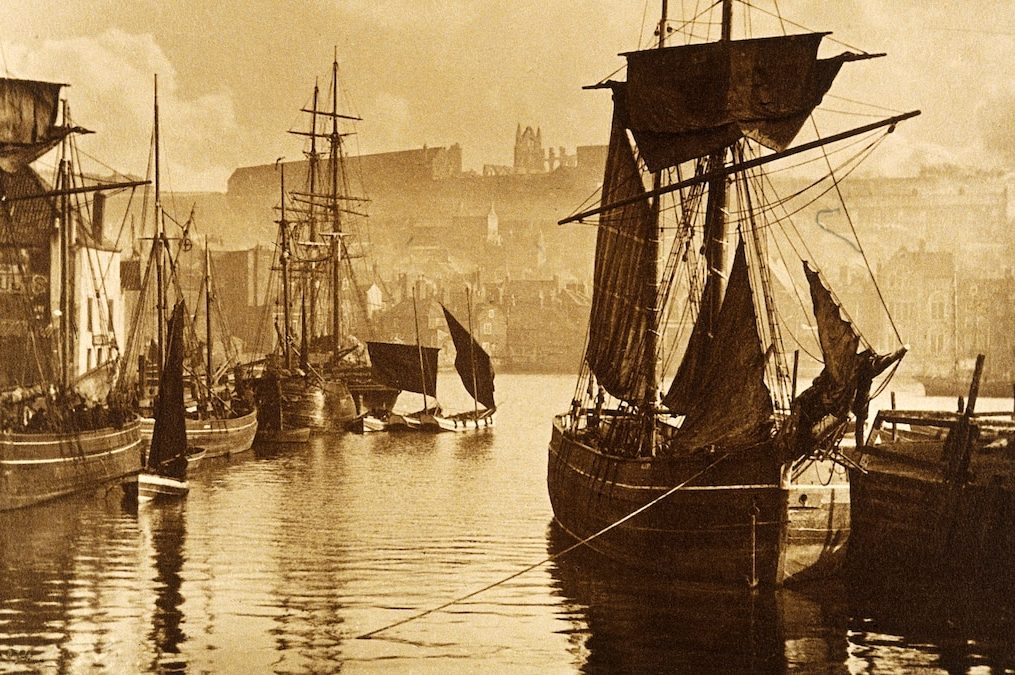The little-known shipwreck that inspired Bram Stoker’s ‘Dracula’
Stoker was moved by grim details from the world around him while penning his horror masterpiece. The real fate of a ship called the Dmitry played an outsized role in his imaginings.
Published August 18, 2023
6 min read
The arrival of the Demeter in Bram Stoker’s Dracula serves as a fundamental part of the titular character’s story: the ship brings death himself to England.
Stoker drew inspiration for his genre-defining horror novel from his time in Whitby, and the dark 1885 fate of the real ship Dmitry on the town’s shore.
The death and tragedy around Stoker ultimately shaped the story that became one of the most famous pieces of English literature and set the stage for the next century of vampire lore.
The Dmitry becomes the Demeter
During the summer of 1890, Irish novelist Bram Stoker vacationed at the seaside town of Whitby in northeast England. Despite spending only a month in the town, Stoker was enthralled by his surroundings: grand mansions and hotels lined the West Cliff while remains of the seventh century Whitby Abbey towered over the East Cliff. Nearby, the cemetery at the Parish Church also served as inspiration as the story of Dracula came to life.
Stoker was also enchanted by the many ships making harbor here. He reportedly visited the Whitby Museum to explore the history of these vessels, as well as a local library, where he came upon William Wilkinson’s book The Accounts of Principalities of Wallachia and Moldova. Stoker marked in his notes:
DRACULA in the Wallachian language means DEVIL. The Wallachians were, at that time, as they are at present, used to give this as a surname to any person who rendered himself conspicuous either by courage, cruel actions, or cunning.
Stoker reportedly asked around the shore about shipwrecks in Whitby, notably the Dmitry, a ship that had wrecked five years earlier.
The cargo vessel Dmitry had set sail from Narva in Russia (modern-day Estonia) in 1885. On October 24, the Dmitry was one of two ships run ashore at Whitby by “a storm of great violence,” according to contemporary newspaper accounts. The other vessel, the Mary and Agnes, was stranded in the raging sea and a lifeboat was sent to rescue its crew. When the crew of the Mary and Agnes was ferried to the shore, per the Leeds Mercury, “their safe landing [was] the signal for loud huzzas by the thousands of people assembled on shore.”
(Vlad the Impaler’s thirst for blood was an inspiration for Count Dracula.)
Those same onlookers watched on to see what would happen with the Dmitry. As reported by the North-Eastern Daily Gazette, the crew remained on board in the hopes they would be able to dock, but “the sea beat savagely against the vessel. Her masts gave way and fell with a crash over her side, and the vessel herself began to break up.”
Though unclear exactly how they were rescued, in the end, all seven members of the Dmitry’s crew were safely brought to shore.
There were several unique aspects to the last voyage of the Dmitry that appear to have stood out to Stoker. The Demeter originated in Varna (an anagram for Narva, where the Dmitry originated), and similarly carried “ballast of silver sand, with only a small amount of cargo—a number of great wooden boxes filled with mould.”
(The bloody truth about vampires.)
Through conversations with fishermen in Whitby, Stoker learned of an untold number of local deaths at sea. Stoker reportedly made note of some 90 names from gravestones in Whitby for future use in his story, including the surname “Swales.” Soon after the arrival of the Demeter in Dracula, he wrote “Mr. Swales was found dead… his neck being broken.”
What inspired Dracula’s canine form?
In Stoker’s novel, Dracula himself took the form of a dog to make his way from the Demeter to dry land, but there was no dog reported to have been on the Dmitry. According to Mel Ni Mhaolanfaidh and Marlon McGarry in 2021, the dog in Dracula may be an homage to the wreck of the Greyhound in 1770.
The Greyhound sailed from Whitby and sank off the coast of Ireland on December 12, 1770 (120 years prior to Stoker’s arrival in the town). Stoker’s mother, Charlotte, was from Sligo, a town in close proximity to the wreck. When the storm that sank the ship surged again, a young cabin boy was left stranded. The rescue effort failed, with only one out of the some 20 men sent to save him tragically dying in the process.
(Inside the fortress known as ‘Dracula’s castle’.)
Stoker made no reference to a dog in his notes until two months after he’d departed from Whitby. On October 15, 1890, Stoker wrote, “When ship ran in to Collier’s Hope, big dog jumped off bow & ran over pier – up Kiln Yard & church steps & into churchyard…Local dog found ripped open & graves torn up…” It’s not clear if Stoker learned of these details from the Dmitry wreck, another Whitby wreck, or was his own creation.
In the novel, the arrival of the Demeter was paired with a similarly remarkable incident: “The very instant the shore was touched, an immense dog sprang up on deck from below, as if shot up by the concussion, and running forward, jumped from the bow on the sand.”
The dog, a disguised Dracula, wrought bloodshed and death from that point forward. This dog resembled the barghest, a mythical monster often associated with Yorkshire. Spellings and specific forms of barghest vary but the dog-like being foretold of pain, disaster, or even death to all who saw it. The barghest also elicited howling from dogs in its vicinity, something Dracula protagonist Mina Murray reported took place soon after the arrival of the Demeter.
